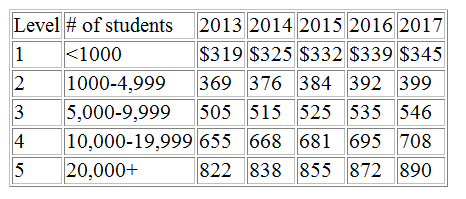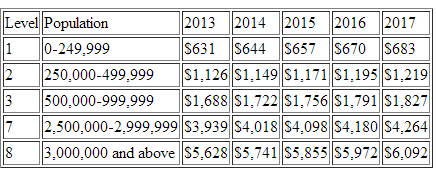The Copyright Royalty Board has released its rates for non-commercial educational (NCE) radio stations. As the CommLaw blog notes, the significant change for college stations is the “elimination of the one-size-fits-all flat fee approach which has historically been used.” Now tithes for 2013 through 2017 will be determined by the number of full time students at the respective institution, and the rights holders association involved.
So, for ASCAP compositions, here are the college rates:
The rates appear to be the same for BMI compositions. There is a bit of leniency for some college outlets. They get “Level 1” rates if they have effective radiated power (ERP) of 100 watts or less.
For non-NPR and non-education affiliated stations, the fees are more complicated. The schedule is tethered to population as estimated within a station’s broadcast contour. A big question is whether these will cover the next generation of Low Power FM stations. Here are some of the ASCAP rates for music oriented stations—that is, stations whose content is twenty percent or more “feature music” (“any performance of a musical work, whether live or recorded, that is the principal focus of audience attention.”):
The year-to-year increases are rather slight, although $6,092 does seem like quite a hunk of cash for a struggling, non-college, non-NPR NCE. Tethering rates to estimated audience size might be kinder, but more difficult to ascertain. For “talk format” stations (“<20% Feature Music programming”), the rates rise less steeply, maxing out at $2,132 in 2017 for a station with a contour covering three million people or more.
BTW: none of this covers webcasting—an entirely different can of pain. Any opinions/input from our readers on the fairness of these rates is welcome.





